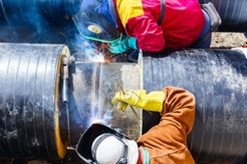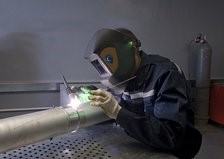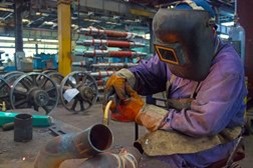When faced with the need to choose a welding method, the question arises as to whether quality or efficiency should be given priority.
However, the main aspect will always be the specifications of the end customer. What is his field of activity? What welding result does he expect?
It is easy to understand the difference between welding a large diameter, thick tube prepared with a bevel that needs to be filled in - for example for a pipeline - and welding a 3 mm thin tube that must meet the quality requirements of a clean room environment.
It will therefore generally be the customer's application that will guide the choice of pipe welding method. What other criteria should be considered when choosing a tube welding method?
How do you choose the most suitable welding method? Our experts share their advice with you!
Criterion 1: The initial investment for the welding method

The price of welding equipment depends on the welding method and the initial purchase price. Here an example: If you just want to weld with an electrode, you will find a good quality welding machine in a DIY store starting at 200 Euros, while a high energy density welding equipment can easily cost several million Euros.
At this level of investment, it is important to ensure that the equipment will pay for itself over time.
>> What is the cost of orbital welding?
Criterion 2: The quality of the welds

In general, it can be said that quality increases with the amount of investment. The degree of automation plays an important role here. A welding power supply with an appropriate WPS will always produce the best welding quality, provided that the tube is well prepared beforehand.
A manual weld, on the other hand, will always depend on the experience, know-how and physical as well as mental condition of the welder. The degree of quality of the final weld is an essential criterion for choosing a tube welding method.
Criterion 3: Automation and improved working conditions
The automation of welding equipment has considerably changed the working conditions of welders. Awkward positions, tedious repetitive welding, welding in hazardous environments or confined spaces... all this can be avoided with automated welding methods.
The TIG welding method is particularly appreciated by welders because there is no weld spatter and virtually no welding fumes.
Criterion 4: The training and technical skills necessary for the chosen welding method

The training and skills required depend once again on the welding method.
Semi-automatic, automatic and robotized methods require the least amount of technical skills but require theoretical knowledge of welding, while a manual welder requires dexterity in the movement that requires extensive experience.
Criterion 5: Standards and requirements of the target markets
Depending on the standards to be respected and the requirements of the targeted markets, one may also have to choose one pipe welding method over another.



